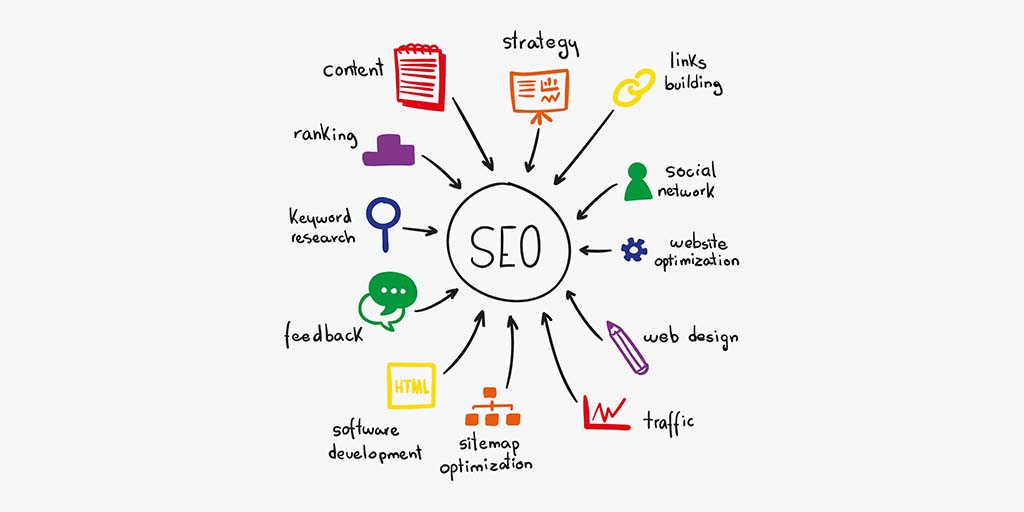Technical SEO is a critical aspect of e-commerce that focuses on optimizing the technical elements of a website to improve its search engine rankings, enhance user experience, and drive more traffic. For e-commerce websites, where competition is fierce and search visibility can make or break a business, technical SEO plays a pivotal role in ensuring that the site is accessible, fast, and easy to navigate. This article explores the importance of technical SEO in e-commerce, its key components, and best practices for implementing effective technical SEO strategies.
Importance of Technical SEO in E-Commerce
Enhanced Search Engine Visibility
Search engines need to be able to crawl and index e-commerce sites effectively to rank them in search results. Technical SEO ensures that all pages, including product listings, category pages, and blog posts, are accessible to search engines, leading to better visibility and higher rankings.
Improved User Experience
A technically optimized e-commerce site provides a better user experience by ensuring fast load times, easy navigation, and mobile-friendliness. A positive user experience can lead to higher engagement, lower bounce rates, and increased conversions.
Increased Organic Traffic
By optimizing technical elements such as site structure, URL hierarchy, and internal linking, e-commerce sites can attract more organic traffic. Higher search engine rankings lead to more visibility, which in turn drives more potential customers to the site.
Better Conversion Rates
Technical SEO improvements, such as faster page load times and streamlined navigation, can directly impact conversion rates. When users can quickly find and purchase products, they are more likely to complete their transactions, leading to higher sales and revenue.
Key Components of Technical SEO for E-Commerce
Site Architecture and URL Structure
A well-organized site architecture and clear URL structure are essential for both search engines and users. Ensure that your site has a logical hierarchy, with categories and subcategories that make it easy to navigate.
Best Practices:
- Use descriptive, keyword-rich URLs.
- Implement a clear category and subcategory structure.
- Use breadcrumbs to enhance navigation and improve internal linking.
Mobile Optimization
With a significant portion of e-commerce traffic coming from mobile devices, optimizing for mobile is crucial. Ensure that your site is responsive and provides a seamless experience across all devices.
Best Practices:
- Use responsive design to adapt to different screen sizes.
- Optimize images and media for faster mobile load times.
- Ensure buttons and links are easy to tap on small screens.
Site Speed and Performance
Fast load times are essential for retaining users and improving search engine rankings. Optimize your site’s performance by reducing the size of images, minifying CSS and JavaScript, and leveraging browser caching.
Best Practices:
- Compress and optimize images.
- Use a Content Delivery Network (CDN) to distribute content.
- Minify CSS, JavaScript, and HTML files.
Secure Sockets Layer (SSL) Certificates
Security is a critical concern for e-commerce sites, where users share sensitive information such as credit card details. Implementing SSL certificates ensures that data is encrypted and secure, and search engines favor secure sites.
Best Practices:
- Use HTTPS for all pages on your site.
- Regularly update your SSL certificates.
- Display security badges to build trust with users.
Structured Data and Rich Snippets
Structured data helps search engines understand the content on your site and can enhance your listings with rich snippets. This can improve your click-through rates and drive more traffic to your site.
Best Practices:
- Implement schema markup for products, reviews, and ratings.
- Use JSON-LD format for structured data.
- Test your structured data with Google’s Structured Data Testing Tool.
XML Sitemaps and Robots.txt
XML sitemaps and robots.txt files are essential for guiding search engines through your site. Sitemaps ensure that all important pages are crawled and indexed, while robots.txt can prevent search engines from indexing duplicate or low-value pages.
Best Practices:
- Regularly update your XML sitemap and submit it to Google Search Console.
- Use robots.txt to block crawlers from accessing unnecessary or duplicate content.
- Monitor crawl errors and fix any issues promptly.
Pagination and Canonicalization
E-commerce sites often have paginated pages and duplicate content issues. Proper use of pagination and canonical tags helps search engines understand which pages to index and which to ignore.
Best Practices:
- Use rel=”next” and rel=”prev” tags for paginated content.
- Implement canonical tags to indicate the preferred version of a page.
- Avoid creating duplicate content by managing URL parameters.
Internal Linking
Internal linking helps distribute link equity throughout your site and improves crawlability. Ensure that your internal linking structure is logical and helps users navigate through your site easily.
Best Practices:
- Link from category pages to product pages and vice versa.
- Use descriptive anchor text for internal links.
- Regularly audit and update internal links to fix broken or outdated links.
Error Handling and 404 Pages
Handling errors gracefully and providing helpful 404 pages can improve user experience and keep users engaged on your site. Customize your 404 pages to include navigation options and links to popular products or categories.
Best Practices:
- Monitor and fix broken links regularly.
- Create custom 404 pages with helpful navigation and search options.
- Use 301 redirects for removed or outdated pages to guide users to relevant content.
Technical SEO is a crucial component of a successful e-commerce strategy. By focusing on site architecture, mobile optimization, site speed, security, structured data, and other key elements, you can improve search engine visibility, enhance user experience, and drive more organic traffic to your site. Follow the best practices outlined in this article to implement effective technical SEO strategies and ensure that your e-commerce site performs optimally in search engine results. Regularly audit and update your site to keep up with the latest SEO trends and maintain a competitive edge in the e-commerce landscape.

